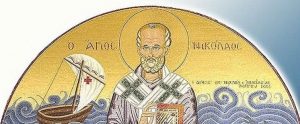TRADITIONS SKOPELOS, CUSTOMS SKOPELOS, CULTURE SKOPELOS, CELEBRATIONS SKOPELOS, NEW YEAR SKOPELOS, SUMMER CUSTOMS SKOPELOS, AGIOS RIGINOS SKOPELOS, SEAFARERS SKOPELOS, TRIMMINGS SKOPELOS, Traditions of Skopelos, Customs of Skopelos, Culture Skopelos, celebrations in Skopelos, New Year, Skopelos, Skopelos Agios Riginos, SKOPELOS BLOG, SKOPELOS BLOGSPOT, SKOPELOS BLOGGING, SKOPELOS BLOGS, SKOPELOS BLOGGERS
TRADITIONS AND CUSTOMS OF SKOPELOS
Skopelos is an island of legends and traditions. The old ones have many stories to tell of pirates and dragons. Many habits and customs of Skopelos have survived to this day.
SKOPELOS SAILORS
Some customs are connected to shipping and the sea since for many years the Skopelites relied on maritime life.
The sailors’ families relied on their faith and religion to alleviate their pain in the absence of their own people.
 Agios Nikolaos (Saint Nicholas) is the Saint of the sailors. His celebration is on December 6th. The priest after the Mass used to give to sailors’ families pieces of a candle for good luck.
Agios Nikolaos (Saint Nicholas) is the Saint of the sailors. His celebration is on December 6th. The priest after the Mass used to give to sailors’ families pieces of a candle for good luck.
During the Easter period and especially on Orthodox Holy Week pieces of candles are also given. The Commissioner received a candle from the four Lamps of the Epitaph and gave them to the sailors for good luck.
SEPTEMBER THE FIRST OR “PROTOTRYITIA”
In Skopelos, the first day of September is particularly important. It is the first day of the grape harvest. In greek, they call that day “Prototryitia”. In fact, in the old days, September 1 was designated as the first day of the year, and the housewives used to do the “ambadiko” meaning the “first foot” The housewife should be the first to enter the house by putting first the right foot.
Moreover, the housewife used to have a glass of water and a pomegranate outside her house. The glass of water would fill it either the previous night or go to the water well in the morning. Upon returning and before entering her home, the lady of the house had to shout “Good Morning” and get in first by pressing the pomegranate and secondly passing in by her right foot. She would then sprinkle the four corners of the house by saying loud, “As the water runs, so does the good in our home.”
This small ritual was ended with a stone thrown out of the house in order for the people living in it to remain as strong as the stone.
Over the years the custom has become Christian Orthodox and the water has been replaced by sanctification. Also, instead of pressing the pomegranate, Skopelos’ housewife kisses a Saint Icon.

JANUARY FIRST
On the first day of the year, January 1st, we meet again the “ambadiko” habit or otherwise the custom of “first foot”. The purpose of this is to repel evil. Again, the housewife of Skopelos’ house is called upon to press or break a pomegranate and to sprinkle water on those present. She also holds ironstone to make all her loved ones iron (meaning strong).
FEBRUARY 25
The patron saint of Skopelos is Agios Riginos celebrates on February 25th. According to legend, Agios Riginos defeated the dragon who for years tormented the inhabitants of Skopelos. Saint Riginos is celebrated with greatness in Skopelos. The Skopelites go to the monastery of Agios Riginos, which is 2 km from Skopelos Town. Many people even go to the monastery on the day of Saint’s Day.
The sacred relics of Saint Riginos are in the Christ Church. This is the starting point of the procession that ends at the monastery of Saint Riginos. There will also be a Mass. In the end, the sacred relics are returned back to the church of Christ.
The procession, on its return to Skopelos, will make a great stop at the old bridge, the bridge of Ai-Reginaki. After all, according to tradition, this is where Saint Riginos, the patron saint of Skopelos, was beheaded.
JUNE 23
In Skopelos, on June 23, they celebrate Saint John the Rigana. St. John’s best-known custom is “Klidonas”. The most intense celebration was held in Klima.
Particularly in Klima, on St. John’s Eve, a child went to the fountain and brought clean water. This water was emptied by the women in a jug that was covering.
Inside this jug, the girls of the village threw a ring or some pieces of jewelry. The night on St. John’s Day, they opened the jug, “Klidonas”, singing:
“Open to the “Klidonas” and decorate with velvet in order for the king and the princess to pass.”
Then someone was getting a piece of jewelry from the jug. The girl he belonged to was also the lucky one.
In the end, the girls who wanted to guess who they were going to marry put some water from the jug into their mouths. The first name they would hear was the groom’s name. If they looked in the jug, they could even see the groom’s face.
the eve of St. John of Rigana
Throughout Skopelos, the eve of St. John of Rigana used to light fires with twigs and jump over them.
The reason they jumped the fires was simply for “good luck “.
They still believed that if they stamped their feet with ashes of St. John’s fires they would never smell.
St. John’s day, June 23, in Skopelos, they were gathering oregano, which served as nostrum. Also on the same day, they were raining their heads with seawater for “good luck” and wish each other good summer.
SUPERSTITIOUS OF EVIL EYE
On Skopelos Island, people do believe in the theory of the “evil eye”. The process or even better the prayer to drive away the evil is called “ksematiasma”.
In order to understand what is the meaning of the specific “prayer” take this example. You are at the office and suddenly you are suffering a bad headache out of the blue. If you believe in “evil eye” it means that your headache has appeared because someone was talking about you, looked at you the wrong way, etc. In this case, you perform “ksematiasma” so as to throw the “evil eye” away.
The way the Skopelites get rid of the evil eye varies.
The best known is a combination of a specific prayer and olive oil. They say a prayer and at the end, they pour 3 drops of oil into a glass of water. If the drops dissolve it means that the man was “healed”.
Another way is to throw 3 pieces of charcoal into a glass of water at the same time as the prayer. If they go to the bottom of the glass it means that man is relieved from the evil eye.
Some women in Skopelos say the “prayer” by using a small picture or across.
Skopelos.com – Skopelos Blog
Blog.Skopelos.com – Skopelos.com/Blog
